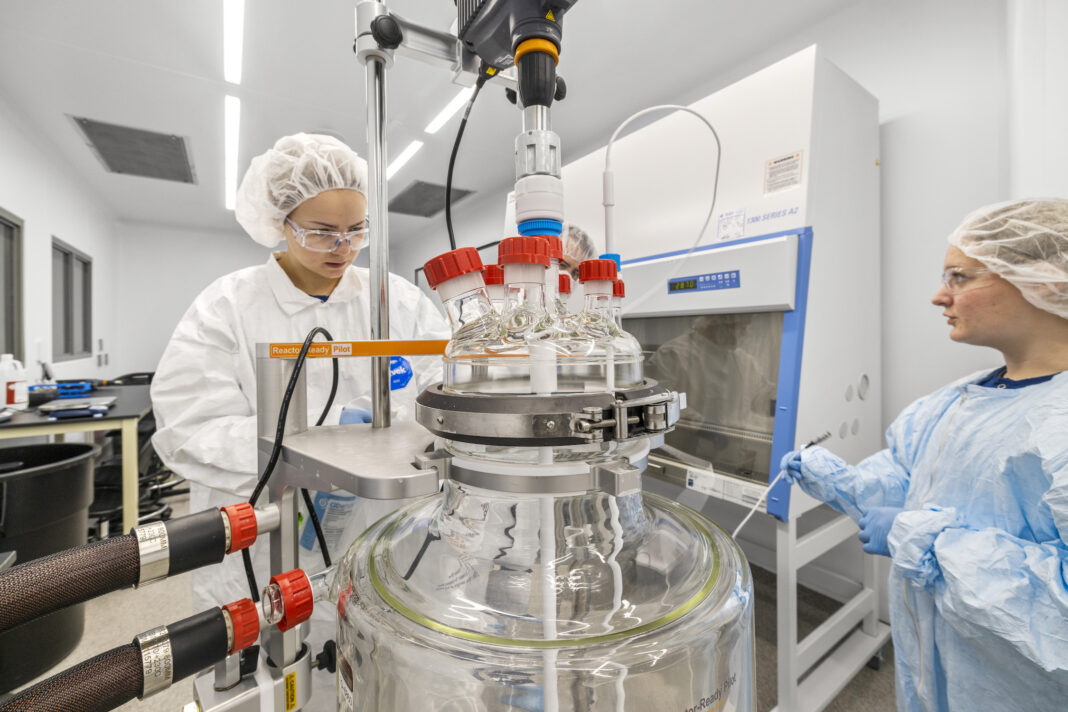Although the COVID-19 pandemic brought mRNA-based vaccines to public attention, this method is not new. In 1990, the late Jon Wolfe, PhD, professor of medicine at the University of Wisconsin and founder of Mirus Bio, and his colleagues published research on mice that suggested that mRNA might one day be used in vaccines. Today, many companies and academic scientists explore a wide range of mRNA-based therapies. One recent market report claimed: “The global mRNA vaccine and therapeutics market was valued at $34.73 billion in 2022 and is anticipated to surpass a valuation of $68.07 billion by 2030.” But can companies make enough mRNA for so many applications?
One team of scientists from Portugal and the U.K. notes: “The current [in vitro transcription] mRNA production methods must be improved to move mRNA technology to commercialization and to support market demand.”
Aldevron expanded its mRNA custom manufacturing
Realizing those improvements in mRNA production appears to depend on teamwork. In some cases, companies partner to improve production. In other cases, large corporations combine in-house companies. On May 1, Aldevron, a Danaher company, announced the expansion of its mRNA custom manufacturing—going from a cell bank to a drug product. Doing that required combining Aldevron’s capabilities with the technologies and expertise of two other Danaher companies, Cytiva and Precision NanoSystems Inc. (PNI).
Part of the drive to make mRNA through partnerships or in-house teams arises from a need to streamline the production. “We have had clients that worked with multiple outside partners—a partner for their cell bank, linear templates, RNA drug substance, LNP encapsulation, fill/finish, and outsourcing analytical testing at each step,” says Todd Howren, PhD, vice president, RNA at Aldevron. “So, the complexity of bringing a final RNA drug product into the clinic was just astronomical.” Plus, shipping a product from one partner to another eats up precious time.

Although teaming up might be required to make more mRNA, not just any team will work. By combining the capabilities of three companies, for example, Aldevron hopes to simplify and accelerate the production of any mRNA-based therapeutic. To do that, Howren says, “there has to really be a tight-knit relationship among team members, and that’s just what we have, which ultimately supports our clients to accelerate therapeutics to the clinic.”
Minimizing impurities
One key issue critical to mRNA manufacturing is the need to minimize impurities that end up in the product. Those impurities can even be mRNA—just not the desired mRNA.
According to Venkata Indurthi, PhD, chief scientific officer of Aldevron, “The next wave of mRNA in general will be longer mRNAs.” COVID-19 vaccines, for example, only targeted the spike protein of the virus. “When you look at more complicated diseases, you probably have to deliver more cargo,” Indurthi says, “and longer mRNAs can provide that.”
Making longer mRNAs, though, spawns more upstream and downstream challenges. First, 20-30% of the longer mRNAs produced won’t be full length with most current techniques. Second, the complex secondary structure of longer mRNAs reduces their binding capacity in downstream filtration, which makes it more complicated to remove impurities, including partial-length mRNAs. Indurthi adds that longer mRNAs are more sensitive to temperature and organic solvents, which are commonly used to remove impurities.
In some cases, the dose of the mRNA could simplify the impurity problem. The name of saRNA explains its main benefit—it reproduces itself once administered as a therapy. “In theory, your doses can be 50 to 100 times less,” says Indurthi, “and that means less impurities, because a lot of impurities are diluted out.”
Overall, producing the highest quality mRNA depends on a combination of upstream and downstream processes. Aldevron, for example, produces mRNA through in vitro transcription (IVT).
“For the mRNA IVT reaction, we aim to offer reaction methods and protocols which serve to generate fewer by-product impurities, and if you are unable to alleviate these by-products, then utilize appropriate post-reaction purification methods and procedures to remove any impurities,” says Todd Howren, PhD, vice president, RNA at Aldevron. “You can attack the impurity challenge from two different approaches, and we’re focusing on both.”
The actual approach to downstream purification is usually proprietary, but it often requires processes, such as high-performance liquid chromatography (HPLC), that are hard to scale. That’s an issue that many companies hope to resolve.


